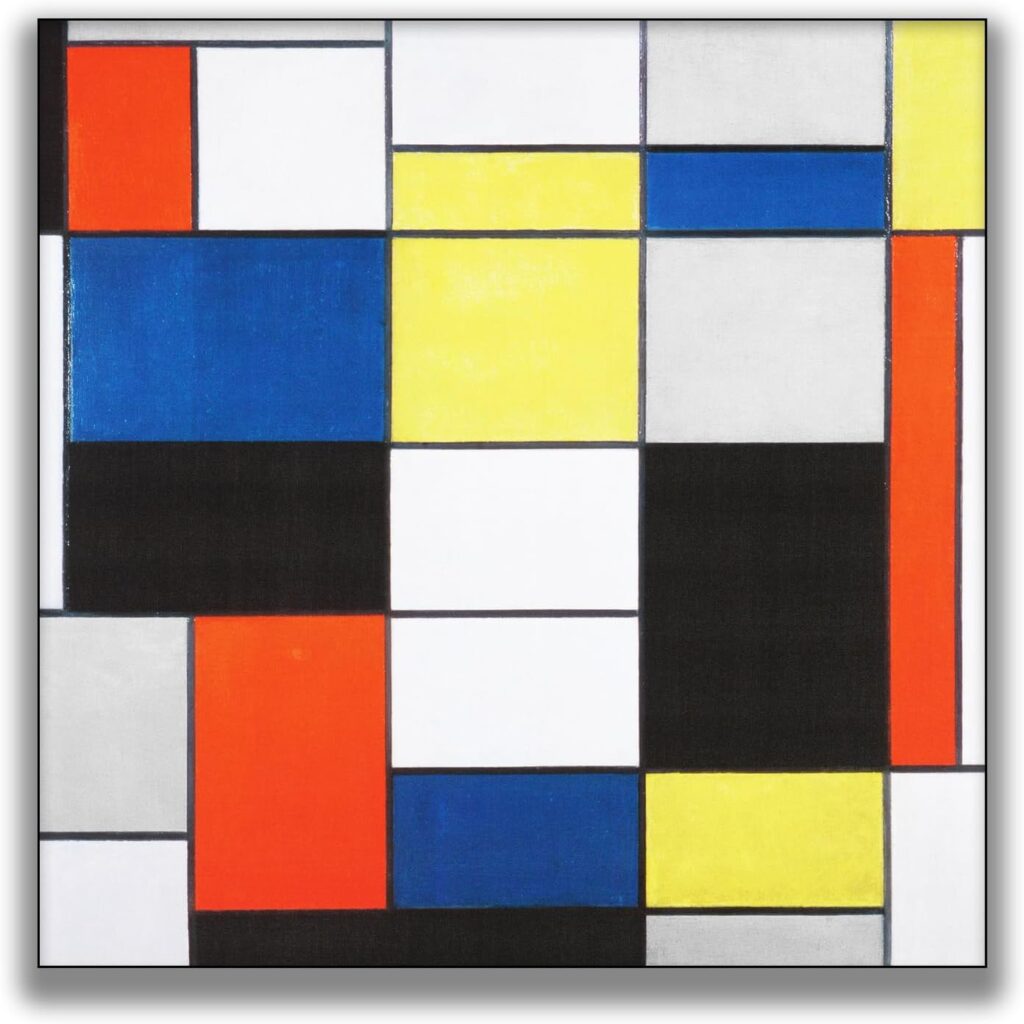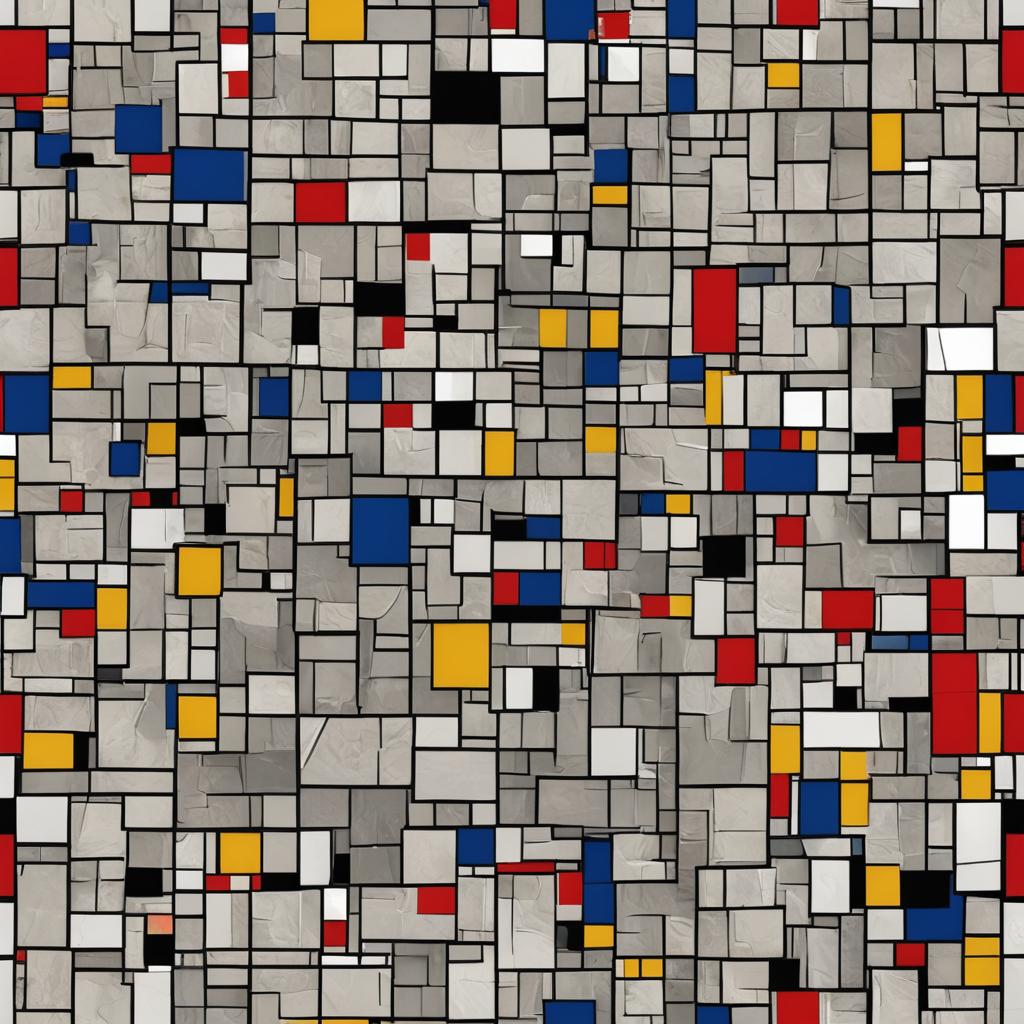Piet Mondrian, one of the pioneers of abstract art, is renowned for his distinctive style characterized by geometric forms, bold colors, and a strong emphasis on grid-like compositions. This guide delves into Mondrian’s life, artistic evolution, and the fundamental elements of his iconic style, making it an essential read for beginners and art enthusiasts alike.
Who Was Piet Mondrian?
Piet Mondrian was born on March 7, 1872, in Amersfoort, Netherlands. Initially influenced by the natural landscapes of his homeland, his early work displayed a more traditional approach to painting. However, as he progressed, Mondrian began to explore abstraction, leading to the creation of his signature style.
Checkout our Podcast on Mondrian
Download available.
Early Life and Influences
Mondrian’s artistic journey began with his education at the Amsterdam School of Fine Arts. His early works were primarily landscapes, but he soon became interested in the Dutch avant-garde movement. Influenced by artists such as Vincent van Gogh and the Symbolist movement, Mondrian gradually shifted towards abstraction.
The Move to Abstraction
In the early 1900s, Mondrian moved to Paris, where he encountered Cubism. This movement profoundly impacted his work, pushing him towards a more geometric abstraction. By 1917, he had developed a style that would define his career: a composition of horizontal and vertical lines, primary colors, and a white background.
The Elements of Mondrian’s Style
Mondrian’s style is defined by several key elements that contribute to its uniqueness and appeal:
1. Geometric Compositions
Mondrian’s use of geometric shapes is perhaps his most recognizable feature. His paintings often consist of rectangles and squares arranged in a grid-like pattern. This approach emphasizes balance and harmony, creating a sense of order within the chaos of color.
2. Primary Colors
The color palette used by Mondrian is another hallmark of his work. He predominantly employed primary colors—red, blue, and yellow—alongside black and white. This limited palette not only enhances the visual impact of his compositions but also aligns with his philosophical beliefs about the universality of art.
3. The Grid
The grid is central to Mondrian’s aesthetic. It serves as a structural framework that organizes the space within his paintings. This grid system allows for a dynamic interplay between the colors and shapes, leading to a sense of movement and rhythm.
4. Asymmetry
While Mondrian’s works may appear balanced, they often embrace asymmetry. This technique creates tension and interest, inviting viewers to explore the relationships between the different elements within the composition.
5. Spirituality and Philosophy
Mondrian believed that art should transcend the material world and reflect a deeper spiritual reality. His work was influenced by Theosophy, a spiritual movement that sought to understand the nature of existence. This philosophical underpinning is evident in the way he sought harmony and purity in his art.
Iconic Works
Piet Mondrian: A collection of 131 works
To fully appreciate Mondrian’s style, it’s essential to explore some of his most famous works:
Composition II in Red, Blue, and Yellow (1930)
This painting exemplifies Mondrian’s grid structure and vibrant use of primary colors. The interplay between the red, blue, and yellow squares creates a dynamic composition that captures the essence of his style.

Broadway Boogie Woogie (1942-1943)
Inspired by the rhythm of New York City, this work features a more complex grid and a lively arrangement of colors. The energy of the city is reflected in the painting’s vibrant blocks, showcasing Mondrian’s adaptation to his new environment.
Victory Boogie Woogie (1942-1944)
Considered one of his last works, “Victory Boogie Woogie” combines a playful arrangement of shapes and colors, celebrating the vibrancy of life. The painting captures the essence of Mondrian’s style while reflecting his ongoing evolution as an artist.
The Legacy of Piet Mondrian
Mondrian’s influence extends far beyond the realm of painting. His ideas about color and composition have impacted various fields, including design, architecture, and fashion. The minimalist aesthetic he championed continues to inspire contemporary artists and designers.
Mondrian in Design
The clean lines and primary colors of Mondrian’s work have made a significant impact on graphic design. His style can be seen in various logos, posters, and product designs, reflecting the enduring appeal of his aesthetic.
Mondrian in Architecture
Architects like Gerrit Rietveld and Le Corbusier have drawn inspiration from Mondrian’s principles. The use of grids and primary colors in modern architecture can be traced back to his influence, demonstrating how his ideas have shaped the built environment.
Mondrian in Fashion
Fashion designers have also embraced Mondrian’s style. Collections inspired by his work have appeared on runways, showcasing the timelessness of his geometric patterns and bold color choices.
Exploring Mondrian Today
For those interested in exploring Mondrian’s work further, there are many avenues to consider:
Visit Museums
Many museums around the world house Mondrian’s works, including the Museum of Modern Art (MoMA) in New York and the Kunstsammlung Nordrhein-Westfalen in Düsseldorf. Visiting these institutions provides an opportunity to view his masterpieces up close.
Read Literature
Numerous books and articles delve into the life and work of Piet Mondrian. Some recommended readings include:
- Piet Mondrian – A Life – A collection of writings and thoughts on his art.
- Mondrian: His Life, His Art, His Quest for the Absolute – An in-depth look at his life and artistic journey.
Create Your Own Mondrian-Inspired Art
Engaging in a creative project can deepen your understanding of Mondrian’s style. Consider creating your own artwork inspired by his geometric compositions and primary colors. This hands-on experience allows you to appreciate the balance and harmony that define his work.
Conclusion
Piet Mondrian’s iconic style has left an indelible mark on the art world and beyond. By understanding the fundamental elements of his work – geometric compositions, primary colors, the grid, and asymmetry – beginners can appreciate the beauty and complexity of his art. As we explore Mondrian’s legacy, we are reminded of the power of abstraction and its ability to convey profound ideas and emotions.
Whether you are visiting a museum, reading about his life, or creating your own art, Piet Mondrian’s influence is sure to inspire and ignite your creativity. Embrace the elements of his style, and let the spirit of Mondrian guide your artistic journey.



